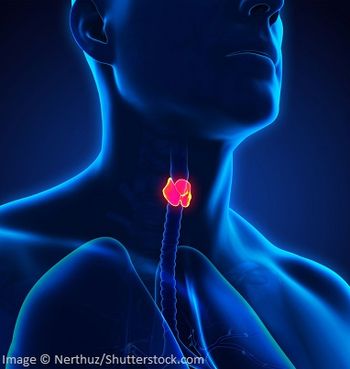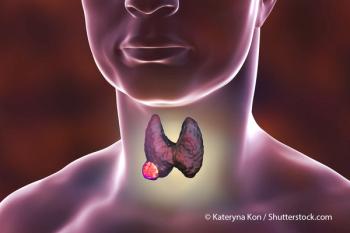
Oncology NEWS International
- Oncology NEWS International Vol 6 No 10
- Volume 6
- Issue 10
FNA Identifies Follicular Variant of Papillary Thyroid Cancer
SAN FRANCISCO-Fine-needle aspiration (FNA) may offer clinicians a partial solution to the problem of identifying follicular variants of papillary thyroid cancers, Larry Shemen, MD, said at the 101st Annual Meeting of the American Academy of Otolaryngology-Head and Neck Surgery. The traditional method of identifying follicular lesions, frozen section analysis, is often inconclusive, he noted. With the frozen section technique, the hallmark of this cancer-capsular or vascular invasion-may not be seen in the particular field studied, producing a false-negative result.
SAN FRANCISCO-Fine-needle aspiration (FNA) may offer clinicians a partial solution to the problem of identifying follicular variants of papillary thyroid cancers, Larry Shemen, MD, said at the 101st Annual Meeting of the American Academy of Otolaryngology-Head and Neck Surgery. The traditional method of identifying follicular lesions, frozen section analysis, is often inconclusive, he noted. With the frozen section technique, the hallmark of this cancer-capsular or vascular invasion-may not be seen in the particular field studied, producing a false-negative result.
A false-negative finding puts the patient at double risk, noted Dr. Shemen who is in private practice in New York City. First, the cancer may progress, decreasing the patient’s chance of cure if it is not found within six months of the original biopsy.
Second, once the cancer is finally identified, complete excision of the thyroid is complicated by scarring left by the prior surgery. “It is easier to perform a total thyroidectomy in a fresh field,” Dr. Shemen said. Subsequent surgeries also increase the risk of nerve damage or parathyroid hypofunction, he added.
Clearly, surgeons need a way to better identify cancerous thyroids on the initial inspection. A retrospective study of 1,000 fine-needle aspirations performed at multiple sites between 1992 and 1996 and read by the same pathologist suggests that this technique may help.
Of the 1,000 aspirations, 232 (23%) were suspicious or positive. Surgical pathology was available for 179 of the positive fine-needle aspirations, and 170 (95%) were confirmed as thyroid cancer.
A follicular variant of papillary cancer was found in 26 (16%) of the positive biopsies. Frozen section analysis returned false-negative results on seven (27%) of the malignant variants, Dr. Shemen said.
Analysis of the results suggest that fine-needle aspiration has a 95.5% diagnostic sensitivity and 98% diagnostic specificity. The predictive value is 94.9% for positive results and 98.2% for negative results, with 97.3% overall efficiency of the procedure.
Positive results from fine-needle aspiration biopsy, Dr. Shemen concluded, are reason enough to override negative or questionable results from frozen section or other types of analysis for papillary thyroid cancer. If the fine-needle biopsy is suspicious and the initial frozen section is unclear, the surgeon should request multiple level cuts or touch preps at the time of surgery.
Conducting a fine-needle biopsy before a scheduled surgery may reduce the overall incidence of false-negative results, he said, and allow more frequent eradication of the malignancy at the time of first surgery.
Articles in this issue
about 28 years ago
Toremifene, Tamoxifen Equivalent in Advanced Breast Cancerabout 28 years ago
Fluorescence ‘LIFE’ Images Spot Occult Lung Cancer Lesionsabout 28 years ago
The Issue That Won’t Go Away: Screening Mammographyabout 28 years ago
News in Brief...about 28 years ago
Concurrent Better Than Sequential Chemo-RT in NSCLCabout 28 years ago
Consumer Version of Merck & Co’s Famous Manual Is Availableabout 28 years ago
A Talk With Dr. Richard Klausner, Head of the NCIabout 28 years ago
Age Is a Factor in Survival of SqCC of the Head and Neckabout 28 years ago
Symptom-Based Staging of Head & Neck CancerNewsletter
Stay up to date on recent advances in the multidisciplinary approach to cancer.





















































































